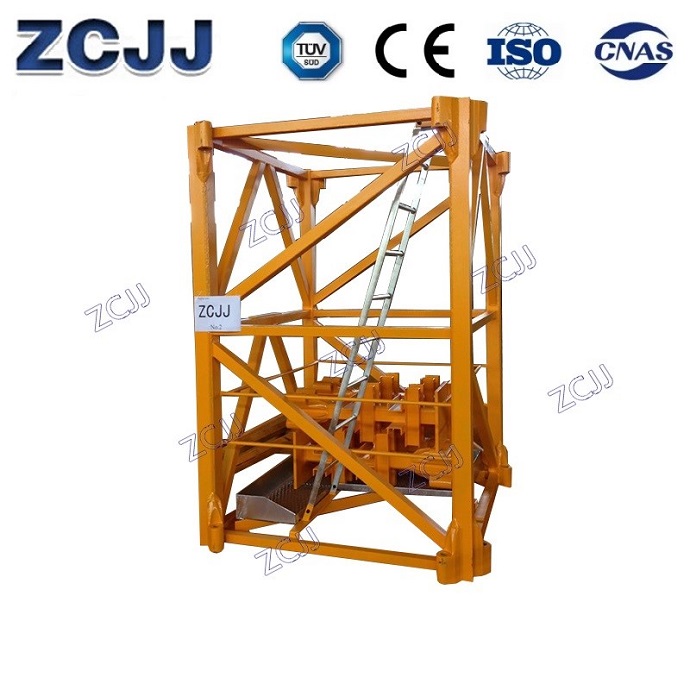154HC Mast Section Explain the reason, harm and preventive measures of the looseness of the connecting bolts of the standard section
When checking the tower crane, it is often found that the connecting bolts of the standard section of the tower body are loose. Some nuts can be screwed in by hand, and the axial movement of the bolts can be felt with a slight lifting by hand, which indicates that the bolts are loose to the point of no stress. So, what is the reason for the looseness of the connecting bolts of the standard section of the tower crane? In this paper, the causes, hazards and preventive measures of the looseness of the connecting bolts of the standard section of the tower crane are explained.
Causes of loose connecting bolts of standard section of tower crane
What causes the loose connection bolts of the standard section of the tower crane? First, we analyze the stress characteristics of the tower body. The stress of the tower body can be simplified as: bending moment M perpendicular to the horizontal plane, torque T in the horizontal plane, axial pressure n, and horizontal force F, among which m and t have a greater impact on bolt loosening. When the boom lifts a load, M is a positive value and M is a negative value when the load is lowered. T generated during swing start is positive and t generated during swing brake is negative.
In normal operation, the tower crane frequently lifts and lowers the heavy objects, and the boom repeatedly starts and brakes, which makes the tower body bear the bending moment and torque which are frequently changed from positive to negative, which leads to the repeated and constant change of the force on the connecting bolts of the standard section, which is the root cause of the bolt looseness. The working characteristics of the tower crane determine the stress characteristics of the connecting bolts of the standard section, which is insurmountable. Therefore, each tower crane manufacturer adopts high-strength bolts for the connection bolts of the standard section of the tower crane.
The specifications for tower crane and the operation instructions of each tower crane manufacturer have put forward requirements for the installation of this kind of bolt connection, which requires the preload to be applied during the installation, and different preload values to different specifications of connecting bolts. For example, for the commonly used 8.8 grade M24 bolts, the preload is 155kN. In order to accurately apply the pre tightening force, the tightening torque that should act on the bolt must be calculated according to the torque coefficient of the high-strength bolt. For the above 8.8 grade M24 bolt, the theoretical pre tightening torque is about 700n · M. At present, the installation of tower crane in Chengdu is almost based on the experience of operators,
Many operators don't even have the concept of specified pre tightening force and theoretical pre tightening torque, let alone use torque to control bolt pre tightening force. In addition, the tightening of the connecting bolt of the standard joint is working at high altitude, and the operation conditions are not good. If the actual pre tightening torque is applied to 500N, the labor intensity of the workers will be greatly increased, and it is not easy to screw the pre tightening torque to meet the requirements directly by manpower.
It can be seen that the bolt preload of the actual installed tower crane can hardly meet the specified preload requirements, which is an important reason for bolt loosening. In addition, when the tower crane is jacked and jointed, the connection contact surface of the standard section on the side of the boom is tensioned, and the connection contact surface of the standard section on the side of the balance arm is pressurized. Under the same tightening torque, the pre tightening force in the bolts on both sides is equal at this time. When the tower crane rotates and the direction of the boom changes, the pressure and tension of the contact surface of the standard section of the tower body changes, and the stress in the bolt changes greatly, especially when the boom is turned to the opposite direction of jacking and joint adding, the connection contact surface of the standard section on the original boom side changes from tension to compression, and the tension on the bolt is greatly reduced, especially when the original preload is too much less than the correct value There is no preload, which is another important reason for bolt looseness.







